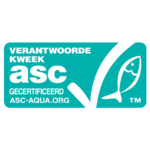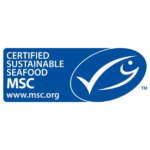Small-spotted catshark
Atlantic Ocean, northeast (FAO 27)
Bottom otter trawl, Beam trawl, Demersal longlines, Gillnets
- Jan
- Feb
- Mar
- Apr
- May
- Jun
- Jul
- Aug
- Sep
- Oct
- Nov
- Dec
Many shark species are on the red list of endangered species of the IUCNIUCN:
International Union for the Conservation of Nature, an international institute for nature and natural resources. It is a partnership with both non-governmental organizations and governments. as vulnerable or endangered. Most species show a downward trend in landings in the North Sea since 1970. Sharks are overfished worldwide. Sharks are vulnerable to [fishing pressure], because the grow slowly, have a low fecundity and reach sexual maturity late. Sharks can get very old, some species even 40 years. They are extra vulnerable during spawning season, because then they school together.
Sharks are bycatch in almost every fishing method, but mainly in longline fishery. The large-scale removal of apex predators out of the food chain has probably an impact on the ecosystem, although there is not much known about it concerning sharks.
In the EU it is since 2003 forbidden to cut of the fins of sharks. These rule however is easy to evade. The European Commission has made a shark action plan to better protect the sharks. The international fishery management organisations acknowledge the problem of shark bycatch, but don’t really take measures. According to ICESICES:
International Council for the Exploration of the Sea, an international organization dedicated to research and advice for a sustainable use of the oceans. , the fishery on, among others, spiny dogfish needs to be stopped.




